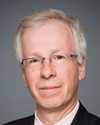My reaction to the census was fairly positive, given that, as you said, there has been an increase in the number of francophones both in and outside Quebec. Those who have negative things to say after each census had a little more difficulty this time saying that this is the end of French outside Quebec, and that French was fundamentally threatened. To be honest, there is some stability and even growth in the communities.
As for the country's diversity and immigration, I believe that we cannot welcome 250,000 newcomers to Canada every year and maintain the same percentage of individuals who have English or French as their mother tongue. It's a question of math. However, these anniversaries are particularly significant for telling Canada's story to those who have not lived it or learned it in school. I think public history, if I may say so, is becoming increasingly important for our country, a country that welcomes immigrants.
It is becoming more important for minority institutions to have a certain visibility. I read the transcript of the testimony of Anthony Wilson-Smith, the president of the Historica-Dominion Institute, who said before this committee that he hears more people speaking Russian in Toronto than French. This is someone who speaks a refined French. But in Toronto, there are a number of francophone institutions around Yonge and College. I think it's important to target these institutions, to have a kind of critical mass of francophone institutions that could even have an influence on the surrounding cafés and public spaces.
There are some historical reasons to explain why the francophone communities in Canada, the ones outside Quebec, are fairly invisible. Among others, there were waves of populations that arrived at different times, and a certain hostility was felt in certain periods. Even when the francophone communities are almost the majority, there is very little signage and public statements. One of the challenges is ensuring that these public spaces, these institutions and these communities are more visible. When francophone immigrants from Mali, Ivory Coast or Senegal arrive in Toronto, they should be able to see that there are francophone community centres and that French is given some visibility in certain parts of the city.




